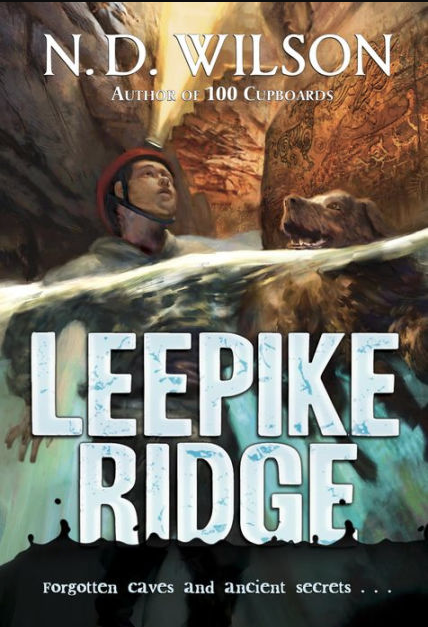
“What poetry does is represent nature. That can be handy because nature is big and changing and various and hard to look at. Whereas with somebody with a great eye and a big soul, they could explain it to you.”
I heard Dr. Larry Arnn, president of Hillsdale College, say this in a lecture shortly after I had finished reading N.D. Wilson’s Leepike Ridge. “Yes!” I thought. “That is exactly what I was trying to express to myself while reading the first chapter.” Wilson has such a great eye. As with anything large seen from close up, the size of his soul has to be assessed by walking around in his story, getting close, stepping back, changing perspectives.
I knew exactly where I was from the very beginning. I already knew a lot about Thomas Hammond, our hero, because of Wilson’s skill in giving me elements with which I could identify. Possibilities: “Once upon a time” might be happening right in Tom’s little valley. I grew up believing that was possible in ours. Conflict: Tom doesn’t like watching his mother cook for a man who isn’t his father. His father has been dead for three years. Mine isn’t dead, but I know the feeling, nonetheless. Impetus: I think every child needs to experience a refrigerator box like Tom’s in some capacity. Ours didn’t come with a raft-sized piece of styrofoam, but it was big enough for my three sisters and me to camp in until it rained. That could have been the start of an adventure.
I also know Tom because I have sons and grandsons.
“Thomas Hammond, who was down by the stream with a red plastic cup full of leeches, heard them [the refrigerator delivery men] and turned to watch . . . When the truck had gone and the dust had settled, Tom dumped forty-seven confused leeches onto the bank, where he thought the birds would find them and be pleasantly surprised.”
“Tom found the box easily enough. He danced around it, picked his spot, and then kicked it back toward the base of the stairs. He liked the sound it made, and he liked how far one kick could send something so big.”
“Tom tried not to think of Jeffrey or the way he smiled at his mother . . . Instead, he focused on finding rocks he could throw at the foam.”
“Wait for the rest of the story, and you will know him better when I am done.”
Just an ordinary boy who ends up in an extraordinary situation with people even more extraordinary; some extraordinarily bad and others extraordinarily courageous. Thence, a story.
My students and I enjoyed this book so much that I don’t want to spoil it for you. I will tell you that the story involves intrigue, desperate treasure seekers, underground caverns, plot twists, danger to life and limb, cowardice, heroism, despicable, and admirable characters.
I do want to include a caution. One of my more sensitive students suffered some anxiety over a weekend because we had to leave off in an intense spot. She needed resolution. I’m not advising you against reading this book with sensitive children. I’m simply warning you that you may need to plan on a reading binge once the action really gets moving.
I’m truly grateful to Wilson for giving us such a compelling story that one of my most reluctant readers could hardly bear for our class time to end. How refreshing to discover modern fiction I’m excited to recommend to anyone who asks, and to some who didn’t know they needed to ask.
Sara Masarik, who has read almost everything Wilson, says that he keeps getting better with each successive book. With a first book this good, I must say, “Bravo!”
Real Cautions and a SPOILER:
* There is one instance of the word b*****d. I simply edited as I read aloud.
* There are serious injuries, a desperate struggle or two, and some of the bad guys die.
* The cover-up of Tom’s father’s death is a bit gruesome, involving a plane crash with nothing left of the pilot to bury but a hand.
* The dog dies. As in real life, I don’t know why this had to happen.
One Comment
Comments are closed.